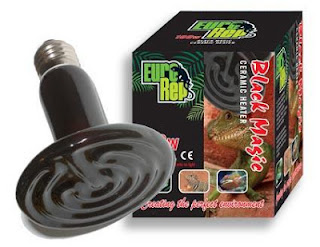Obviously when owning a pet, cleaning is of high priority for keeping your animals healthy. I find that spot checking daily works well. This is where the owner checks the tank for any feces by looking and disturbing the bedding in case the reptile has done it's business beneath the top layer. Furthermore, check the hides and any greenery as they sometimes love being awkward! For this technique to work, you will need to remove some bedding around the spoiled area and this will need replaced. With daily spot checking, the tank will still need to be cleaned thoroughly once per month.
When you clean the tank monthly, remove all bedding and replace with new. You will also need to clean the contents of the tank with either warm soapy water and/or with reptile safe disinfectant. There is a great disinfectant available on the market called F10. Alternatively you can use a bleach solution which is one part bleach to ten parts water and after bleaching, ensure you wash the tank and other items thoroughly in order to remove the bleach.
In the case that the reptile goes to the toilet in their water dish, disinfect using reptile disinfectant and rinse thoroughly. Don't forget that reptiles do require a fresh water source so replace the water daily and clean the water dishes weekly.
Parasites and Infections
Check your reptile for any sign of parasites and infections. The parasites that a reptile can suffer from are ticks and mites as well as internal bugs. Ticks and mites can be treated with mite spray which can be bought from your local reptile store or online. There are seven different types of ticks and 250 types of mites that can harm a reptile. You can spot ticks with your eye and if they appear quite large for an insect it means that they are engorged with blood. Heavy infestations can cause suffocation in monitor lizards. Mites can cause the animal to have a duller appearance and the scales may be pitted or crusty. Mites can also cause ulcers in lizards. Infected reptiles can seem depressed or refuse to eat. They will also rub themselves on rough surfaces and bathe for long periods. Mites and ticks may be first spotted near water sources so check the water dishes.
Ticks
- Never grab a tick with your own fingers, use forceps or tweezers as they carry disease.
- Grab the tick by the head or mouth right where they enter the skin.
- With a steady hand pull firmly outward and do not twist.
- Do not use petroleum jelly, a hot match or alcohol as this will make it worse.
- After you have removed the tick, put it in a jar of alcohol to kill it. Flushing them down the toilet does not kill them.
- Wash your hands after the process thoroughly.
- It is also important not to squash the tick with your fingers.
- If the ticks are in a difficult to remove place, such as nostrils, consult a vet.
 |
| Tick on a lizard |
Mites
- If you are going to use insecticide or pesticide consult your vet before using.
 |
| Mite on a snake |
You can also soak your reptile in a luke warm bath for around 20 mins as this will drown the mites but will not affect them if they are on the reptile's head.
Olive oil can be used by rubbing it on the animal's body to smother the parasites but this can be messy.
Another method is using pest strips or dog/cat flea collars. Place the collars/strips on top of the enclosure. Note: these will most likely contain organophosphates which are lethal for reptiles.
Cyfluthrin can be used safely if you own a tortoise and this will eradicate the parasites.
Furthermore, the tank should be cleaned regularly, disinfecting it with a diluted solution of 1-3 ounces of bleach to one quart of water.
Parasites are more common in new reptiles you have purchased and as such, they should be quarantined before being able to come into contact with any other of your pets. Ticks can travel large distances and can enter other rooms and infect other animals.
Please do your research into what chemicals are lethal to your reptile and consult a vet regarding the use of any pesticides/insecticides.
Other
Other infections include but not limited to: belly rot and respiratory infections. These are usually due to dampness and wet bedding. Ensure ALL wet bedding is removed as soon as possible as the same with soiled bedding.
Belly rot is highly noticeable and can be diagnosed with discoloured scales and in more extreme cases, crusty scales and possible puss. Respiratory infection (or RI) can be diagnosed with a decreased appetite, extensive yawning, moucus near the mouth, wheezing, swollen/bloated body, and clicking noises. This is treated with medication.
 |
| Belly rot |
|

























